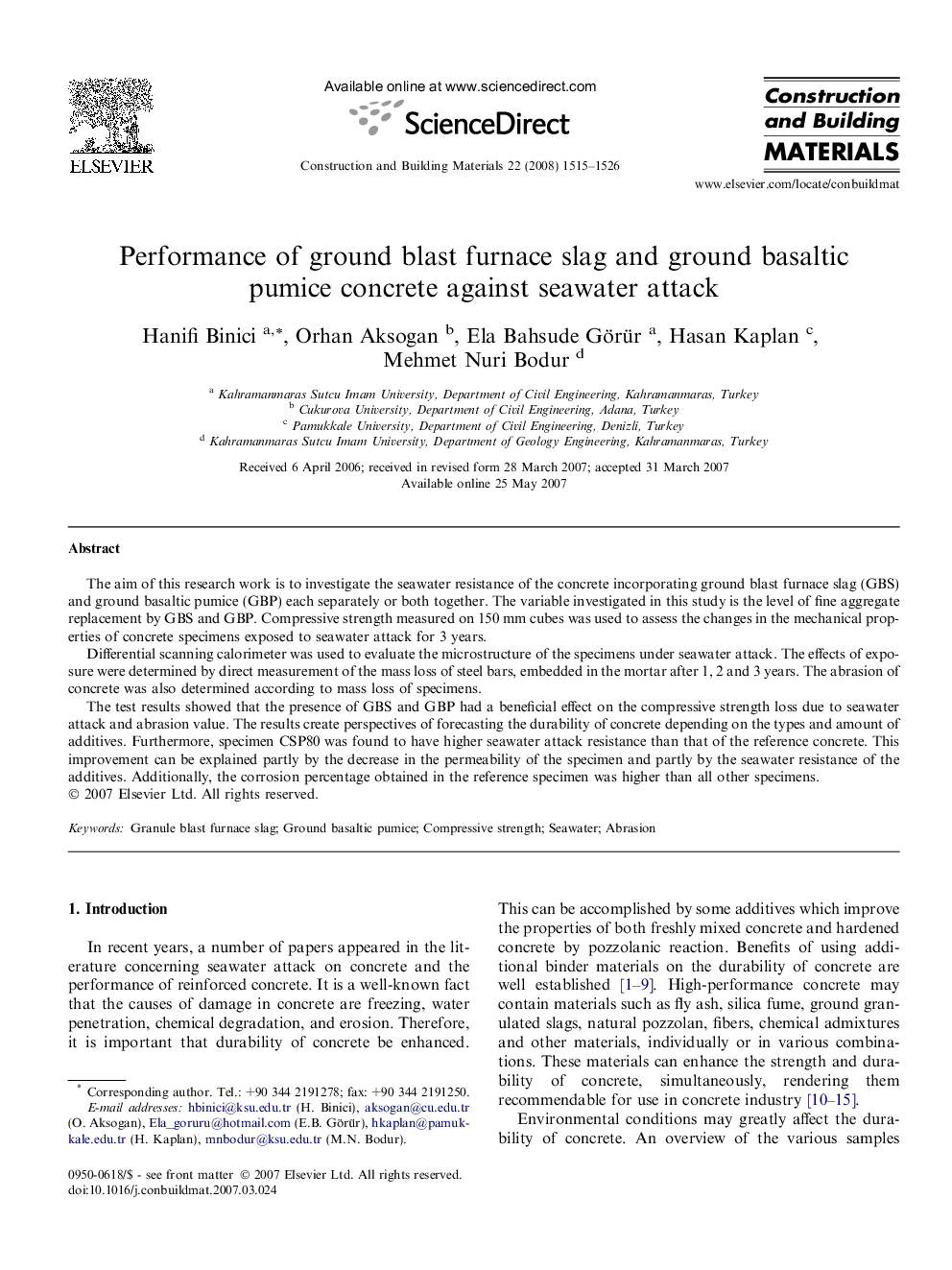| Article ID | Journal | Published Year | Pages | File Type |
|---|---|---|---|---|
| 261234 | Construction and Building Materials | 2008 | 12 Pages |
The aim of this research work is to investigate the seawater resistance of the concrete incorporating ground blast furnace slag (GBS) and ground basaltic pumice (GBP) each separately or both together. The variable investigated in this study is the level of fine aggregate replacement by GBS and GBP. Compressive strength measured on 150 mm cubes was used to assess the changes in the mechanical properties of concrete specimens exposed to seawater attack for 3 years.Differential scanning calorimeter was used to evaluate the microstructure of the specimens under seawater attack. The effects of exposure were determined by direct measurement of the mass loss of steel bars, embedded in the mortar after 1, 2 and 3 years. The abrasion of concrete was also determined according to mass loss of specimens.The test results showed that the presence of GBS and GBP had a beneficial effect on the compressive strength loss due to seawater attack and abrasion value. The results create perspectives of forecasting the durability of concrete depending on the types and amount of additives. Furthermore, specimen CSP80 was found to have higher seawater attack resistance than that of the reference concrete. This improvement can be explained partly by the decrease in the permeability of the specimen and partly by the seawater resistance of the additives. Additionally, the corrosion percentage obtained in the reference specimen was higher than all other specimens.
